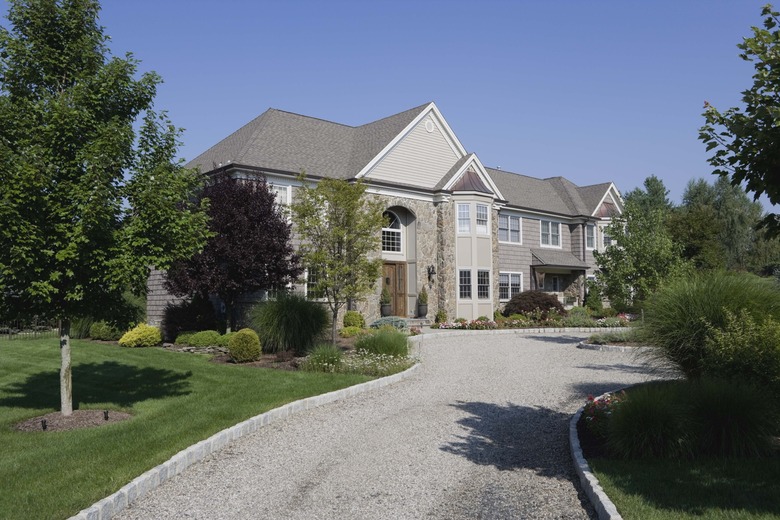Proper Drainage For Sloping Driveways
Step 1
If the driveway slope runs toward the home or deposits water to a flat section, cut a trench through the width of the problem area. Use a masonry drill if the pavement is asphalt or concrete, and dig a trench as wide and deep as the drain channel. Pitch the bottom of the trench toward the lowest side of the driveway and place a drain channel inside so it sits level with the driveway. Caulk the edges of the grid with PVC cement and install underground drain pipes to carry the water to the street or a low-lying area.
French Drain
Step 1
Most driveways intentionally are paved with a slight slope toward the street and a cross slope toward the lower-lying side. Installing narrow French drains along the low side of the driveway prevents water from over-saturating the ground and possibly damaging the driveway foundation. To install, dig a 12-inch deep trench 8 inches wide and 6 inches from the edge of the driveway. Cover the bottom of the trench with gravel and set perforated PVC drain pipes over the center. Fill the remaining hole with gravel and plant flood-tolerant ground cover on top to slow the flow of water.
Step 2
- If the driveway slope runs toward the home or deposits water to a flat section, cut a trench through the width of the problem area.
- Use a masonry drill if the pavement is asphalt or concrete, and dig a trench as wide and deep as the drain channel.
Drainage Swale
Step 1
Redirecting water runoff to a drainage swale is a simple way to manage water accumulation. Choose a low-lying area near the driveway and dig out a sloped depression. Dig out a path from the driveway to the depression and shape the path into a "U." Cover exposed dirt with gravel. then roll sod over the surface or plant hardy, flood-resistant shrubs around the top edges of the gravel. If your landscaping allows it, consider planting a flood-resistant tree such as a willow or river birch to help absorb excess moisture.
Permeable Surface
Step 1
During installation, consider laying a permeable surface for the driveway instead of concrete or asphalt. A gravel driveway provides traction and allows water to seep through, preventing puddles and ice from building up. Another option is to lay interlocking pavers over a base of gravel and sand instead of mortar. The beveled edges of interlocking pavers keep them from sliding around while allowing water to pass through the surface and escape into the ground.
Step 2
- Redirecting water runoff to a drainage swale is a simple way to manage water accumulation.
- During installation, consider laying a permeable surface for the driveway instead of concrete or asphalt.
